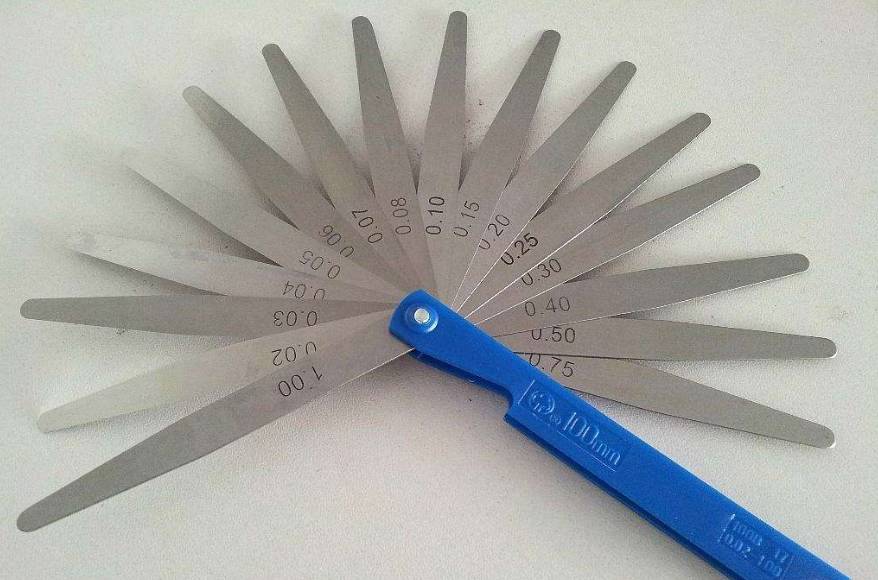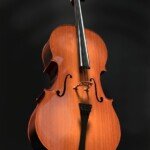1. Classification of measuring instruments
A measuring instrument is an instrument of fixed form which is used to reproduce and provide one or more known quantities. Measuring tools can be divided into the following categories according to their uses:
1. Single Value Measuring Tools
A measurement tool that can only reflect a single value. It can be used to calibrate and adjust other measuring instruments or as a standard quantity for direct comparison with the measured quantity, such as gauge blocks, angle gauge blocks, etc.
2. Multi-value measurement tools
A set of measurement tools that embody the same magnitude. It can also calibrate and adjust other measuring instruments or use it as a standard quantity for direct comparison with the measured quantity, such as a linear scale.
3. Special measuring tools
A measuring tool specially used to test a specific parameter. The most common include: smoothness limit gauges for testing smooth holes or cylindrical shafts, thread gauges for judging the qualification of internal or external threads, inspection models for judging the qualification of surface profiles complex shape and the function of testing assembly accuracy by simulating assembly. passability. Topics and more.
4. Common utensils
In our country, it is customary to designate measuring instruments with relatively simple structures as general measuring tools. Such as vernier caliper, outer diameter micrometer, dial indicator, etc.
2. Technical performance indicators of measuring instruments
1. Nominal value of the measuring tool
Value marked on a measuring tool to indicate its characteristics or to guide its use. Such as the dimensions marked on the measuring block, the dimensions marked on the graduated scale, the angle marked on the angle measuring block, etc.
2. Graduation Value
On the scale of a measuring instrument, difference in magnitude represented by two adjacent engraved lines (the smallest unit of magnitude). If the difference between the values represented by two adjacent engraved lines on the micrometer cylinder of the outer diameter micrometer is 0.01 mm, then the graduation value of the measuring instrument is 0.01 mm. The graduation value is the smallest unit value that can be directly read by a measuring instrument. It reflects the reading accuracy and measurement accuracy of the measuring instrument.
3. Measuring range
Within the allowable uncertainty, the range from the lower limit to the upper limit of the measured value that the measuring instrument can measure. For example, the measuring range of outer diameter micrometer is 0-25mm, 25-50mm, etc., and the measuring range of mechanical comparator is 0-180mm.
4. Measure force
During the contact measurement process, the contact pressure between the probe of the measuring instrument and the measured surface is measured. Too large a measuring force will cause elastic deformation, and too small a measuring force will affect the contact stability.
5. Indication error
The difference between the indicated value of a measuring instrument and the actual value of the measured value. The indication error is a complete reflection of various errors of the measuring instrument itself. Therefore, the indication errors are different at different operating points within the instrument indication range. Generally, gauge blocks or other measuring standards of suitable accuracy can be used to check the indication error of measuring instruments.
3. Selection of measuring tools
Before each measurement, it is necessary to select a measuring tool based on the particular characteristics of the part to be measured. For example, calipers, height rulers, micrometers and depth rulers can be used for length, width, height, depth and exterior. Diameter and pitch difference can be used for shaft diameters, holes and slots can be used. Choose from pad gauges, block gauges or feeler gauges; choose a right angle ruler to measure the right angle of a room; choose an R gauge to measure the R value, choose three-dimensional or two-dimensional measurements when the fit tolerance is; small, the accuracy is high or the geometric tolerance must be calculated. Use a hardness tester to determine the hardness of the steel.
1. Application of stirrups
The caliper can measure the inner diameter, outer diameter, length, width, thickness, pitch difference, height and depth of the object; caliper is the most commonly used and convenient measuring tool, and the most frequently used measuring tool at the treatment site; .
Digital caliper: resolution 0.01 mm, used for dimensional measurements with small tolerances (high precision).
Table map: resolution 0.02mm, used for general size measurement.
Vernier caliper: resolution 0.02mm, used for rough machining measurement.
Before using the caliper, use clean white paper to remove dust and dirt (use the outer measuring surface of the caliper to jam the white paper and then remove it naturally, repeat 2-3 times)
When using a caliper to measure, the measuring surface of the caliper should be as parallel or perpendicular as possible to the measuring surface of the measured object;
When measuring depth, if the measured object has an angle R, it is necessary to avoid the angle R but stay close to it, and the depth gauge should be kept perpendicular to the height as much as possible measured;
When measuring a cylinder, the caliper should be rotated and the maximum value measured in sections.
Due to the high frequency of use of the caliper, maintenance work should be carried out as best as possible. After daily use, it should be wiped and placed in the box before use, the accuracy of the caliper should be checked. be checked with a measuring block.
2. Application of the micrometer
Before using the micrometer, you should use clean white paper to remove dust and dirt (use a micrometer to measure the contact surface and screw surface, jam the white paper and then remove it naturally, repeat 2 at 3 times), then turn the knob and measure the contact. When the surface is in close contact with the screw surface, use fine adjustment. When the two surfaces are in complete contact, adjust to zero then measure.
When measuring material with a micrometer, turn the knob when it is about to touch the workpiece, use the fine adjustment knob to advance when you hear three sounds of click, click and click, and read the data on the ‘screen. or scale.
When measuring plastic products, the measuring contact surface and the screw may lightly touch the product.
When measuring the diameter of a shaft with a micrometer, measure at least two directions and measure the maximum value in sections. The two contact surfaces of the micrometer during measurement should be kept clean at all times to reduce measurement errors.
3. Height Gauge Application
Height rulers are mainly used to measure height, depth, flatness, verticality, concentricity, coaxiality, surface vibration, tooth vibration and depth. When measuring the height gauge, first check whether the probe and each connecting part are loose.
4. Application of thickness gauge
Feeler gauges are suitable for measuring flatness, curvature and straightness.
Flatness measurement:
Place the part on the platform and use a feeler gauge to measure the gap between the part and the platform (note: the feeler gauge and the platform remain firmly pressed without any gaps during measurement).
Straightness measurement:
Place the part on the platform and rotate it once, then use a feeler gauge to measure the gap between the part and the platform.
Curvature measurement:
Place the part on the platform and select the corresponding feeler gauge to measure the gap between the sides or middle of the part and the platform.
Verticality measurement:
Place the right side of the workpiece to be measured on the platform, with the square ruler near the other side, and use a feeler gauge to measure the maximum gap between the workpiece and the square ruler.
5. Application of plug gauge (stem needle):
Suitable for measuring inner diameter, groove width and hole clearance.
If the hole diameter of the workpiece is large and there is no suitable needle gauge, two plug gauges can be superimposed and measured in a 360 degree direction. The plug gauges can be fixed on the V-shaped magnetic block to prevent backlash and make measurement easier.
Aperture measurement
Inner hole measurement: When measuring the hole diameter, the penetration is considered qualified, as shown in the figure below.
Note: When measuring the tampon, it should be inserted vertically and not at an angle.
6. Precision measuring instrument: two-dimensional
The second dimension is a high performance and high precision non-contact measuring instrument. The sensing element of the measuring instrument is not in direct contact with the surface of the measured workpiece, so there is no mechanical measuring force; the two-dimensional element transmits the captured image to the computer data acquisition card through the projection data line. , then imaging on a computer screen by zero software; Measurement of various geometric elements (points, lines, circles, arcs, ellipses, rectangles), distances, angles, intersections and geometric tolerances (roundness, straightness, parallelism, perpendicular, inclination, position and concentricity) on parts, symmetry, and can also perform 2D contour drawings and CAD outputs. Not only can the outline of the part be observed, but the shape of the opaque part surface can also be measured.
Conventional geometric element measurement: The inner circle in the part of the image below forms an acute angle and can only be measured by projection.
Observation of the surface treated by the electrode: The two-dimensional lens has a magnifying function to inspect the roughness after the electrode treatment (magnifies the image 100 times).
Measuring small deep grooves
Gate detection: During mold processing, there are often hidden gates in the grooves, and various detection instruments cannot measure them. At this time, rubber mud can be used to stick to the glue mouth, and the shape of the glue mouth will be changed. be printed on the glue. Then use the second dimension to measure the size of the clay impression to get the size of the door.
Note: Since there is no mechanical force during two-dimensional measurement, try to use two-dimensional measurement for thinner and softer products.
7. Precision measuring instruments: three-dimensional
The three-dimensional dimension is characterized by high precision (up to the μm level); versatility (can replace a variety of length measuring instruments and can be used to measure geometric elements (in addition to measuring elements that can be measured to the second)); dimension, it can also measure cylinders and cones), shape and position tolerance (in addition to shape and position tolerance which can be measured in the second dimension, it also includes cylindricity, flatness and line profile, surface profile, coaxiality) and complex surfaces, as long as the three-dimensional probe can reach it, its geometric dimensions, mutual positions and surface contours can be measured, and the data processing can be completed at the same time. ‘help computers; , high flexibility and excellent digital capabilities have become an important means and effective tool for modern mold processing, manufacturing and quality assurance.
Some molds are being modified and there is no 3D drawing. The coordinate values of each element and the contour of the irregular surface can be measured, then exported using drawing software and transformed into 3D graphics based on the measured elements. be processed and changed quickly and error-free (once the coordinates are defined, the coordinate values can be measured at any time).
3D digital model import and comparative measurement: In order to confirm the consistency of processed parts with the design or find abnormal fit during fitting mold assembly, when some surface contours are neither arcs nor parabolas , but irregular surfaces, when it comes to is impossible to measure geometric elements, you can import the 3D model and compare the measurements with the parts to understand the processing errors because the measured values are deviation values point to point, they can be easily corrected and improved quickly and; actually (the data shown in the figure below are actual measured values) deviation from the theoretical value).
8. Application of hardness tester
Commonly used hardness testers include the Rockwell hardness tester (desktop) and the Leeb hardness tester (portable). Commonly used hardness units are Rockwell HRC, Brinell HB and Vickers HV.
Rockwell HR Hardness Tester (Desktop Hardness Tester)
The Rockwell hardness testing method involves using a diamond cone with a vertex angle of 120 degrees or a steel ball with a diameter of 1.59/3.18mm to press the surface of the material to be tested under a certain load, and the hardness of the material is calculated from the indentation depth. According to the different hardness of the material, it can be divided into three different scales to represent HRA, HRB and HRC.
HRA is the hardness calculated using a 60 kg load and a diamond cone intruder, and is used for extremely hard materials. For example: carbide.
HRB is the hardness obtained using a load of 100 kg and a hardened steel ball with a diameter of 1.58 mm, and is used for materials of lower hardness. For example: annealed steel, cast iron, etc., copper alloy.
HRC is the hardness obtained using a 150 kg load and a diamond cone intruder, and is used for very high hardness materials. For example: quenched steel, tempered steel, quenched and tempered steel and certain stainless steels.
Vickers HV hardness (mainly for surface hardness measurement)
Suitable for microscopic analysis. Use a diamond square cone intruder with a load of less than 120kg and a vertex angle of 136° to press the material surface and measure the diagonal length of the indentation. It is suitable for determining the hardness of larger parts and deeper surface layers.
Leeb HL hardness (portable hardness tester)
Leeb hardness is a dynamic hardness testing method. When the impact body of the hardness sensor impacts the workpiece to be measured, the ratio of the rebound speed to the impact speed when it is 1mm from the workpiece surface is multiplied by 1000, which which is defined as the Leeb hardness value.
Advantages: Leeb hardness tester made by Leeb hardness theory has changed the traditional hardness testing method. Since the hardness sensor is as small as a pen, you can hold the sensor in your hand to directly test the hardness of the workpiece in various directions at the production site. Therefore, it is difficult for other desktop hardness testers to do the job.
Daguang focuses on providing solutions such as precision CNC machining services (3-axis, 4-axis, 5-axis machining), CNC milling, 3D printing and rapid prototyping services.








































